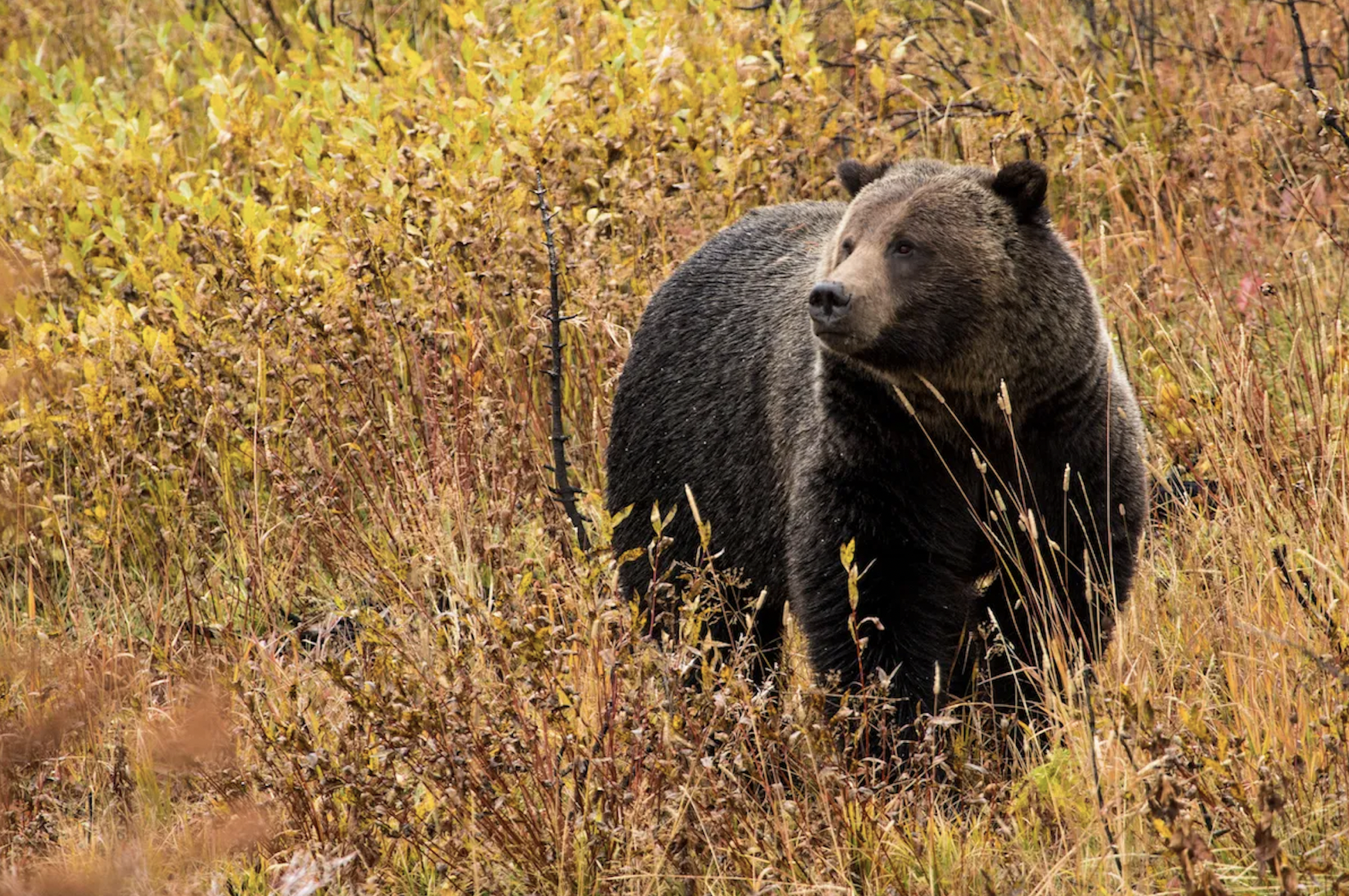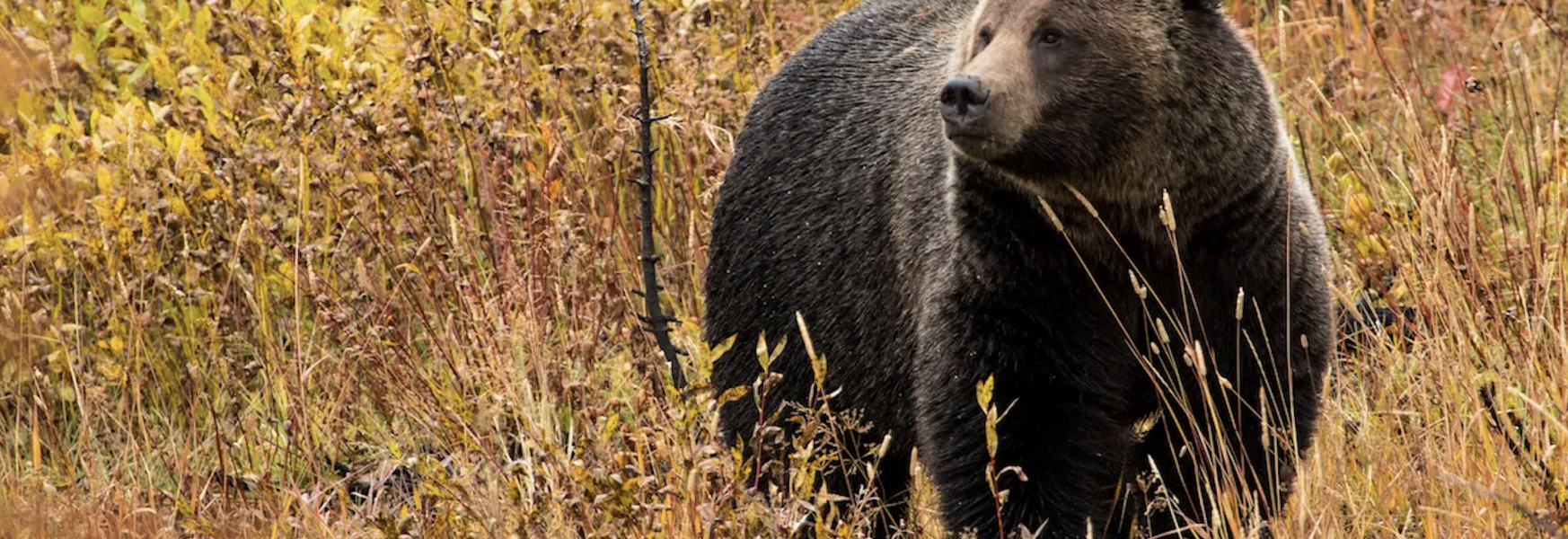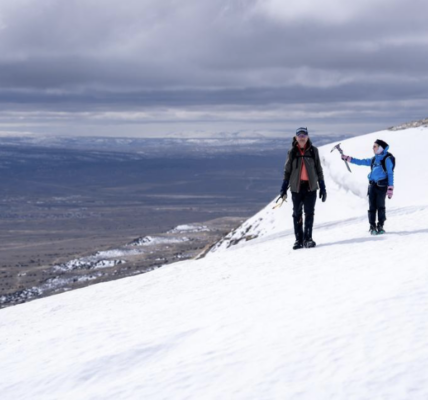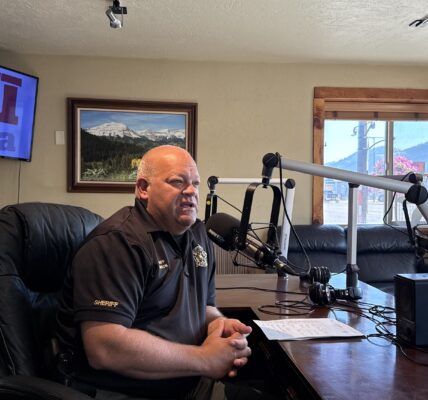
Rather than removing bears, tribal wildlife managers removed people to avoid conflicts. The approach has also been tried before in the Greater Yellowstone Ecosystem.
By Mike Koshmrl, WyoFile.com
Art Lawson wanted to show actor Martin Sensmeier what the Wind River Indian Reservation was all about when he came through town this summer. So Lawson, the Shoshone and Arapahoe Fish and Game’s director, took Sensmeier fishing in the backcountry.
The actor — star of the upcoming film, “Wind River: The Next Chapter” — got a good glimpse of the Eastern Shoshone and Northern Arapaho’s 2.2-million-acre reservation’s wild landscape.
“A bear just popped up right in front of camp,” Lawson recalled of the July encounter. “The actor, actually, just shouted, ‘Bear, bear!’ and it turned around and ran the other way.”
But reports of bold behavior from a large male grizzly bear continued. The grizzly was approaching occupied camps in the same area, the Wilson Creek drainage, high in the Winds at 10,000-plus feet.
“There’s not a lot of tolerance for bears displaying this kind of behavior,” said Pat Hnilicka, the supervisory fish and wildlife biologist for the U.S. Fish and Wildlife’s Lander office. “It’s a really dangerous situation.”
Hnilicka spoke to Ben Jimenez, the Fish and Wildlife Service’s grizzly bear conflict coordinator, about the situation. Rather than wait for something bad to happen, they recommended the tribes close the whole area down.
And the tribes were receptive.
“We had to look out for people,” Lawson said. “But at the end of the day it was for wildlife, too. We don’t want the bear going into camps and thinking it’s OK. We wanted to give the bear a chance to move out of the area.”
Lawson brought the recommendation to the tribal councils, and they were supportive, too. On July 24 they announced that the entire Wilson Creek drainage, which includes a dozen-plus lakes scattered over thousands of acres, would be off-limits to all human access. That’s a precautionary strategy that’s rarely used on such a large swath of the landscape, Wyoming Game and Fish Department Large Carnivore Supervisor Dan Thompson said.
“That’s a fairly unique situation,” he said.
Thompson could think of some parallels. Grand Teton National Park, he pointed out, routinely closes down the Moose-Wilson Road when grizzly bears move into the area to feed on berries, and the park has done the same when elk carcasses, hunters and grizzlies are all in known close proximity to each other.
Yellowstone National Park also has large bear management areas closed at predetermined dates every spring in places where there tends to be high densities of winter-killed elk and bison carcasses.
Still, wildlife and land managers haven’t often closed down large areas as a result of a single bold grizzly that hasn’t yet caused what bear managers characterize as a conflict. At least in the Wilson Creek drainage, the area closure seemed to work, if the goal was to avert a worse outcome for both people and grizzlies.
“We had no further conflicts in the Wilson Creek area,” recalled Hnilicka, the Fish and Wildlife Service biologist. “The tribes reopened it after about a three-week period, and it’s been pretty quiet since. It seems that the bear either moved on, or changed its behavior and is not causing those issues.”
WyoFile is an independent nonprofit news organization focused on Wyoming people, places and policy.





